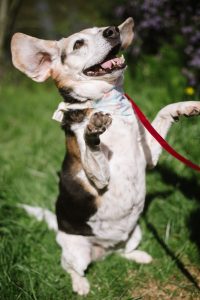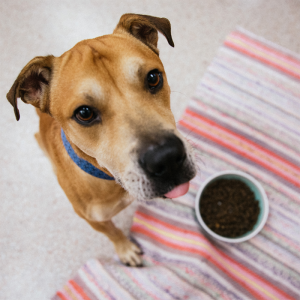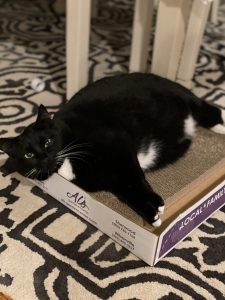Like many of us, our pets may have put on a few pounds during the past year. Boredom, stress and living under lockdown may have led to giving pets extra treats, a few table scraps and other items that can cause the extra calories to add up.
 While some may think a little pudge on a pet looks cute, it can lead to some of the same health concerns that humans face such as diabetes, mobility and breathing issues. All these factors can lead to a shorter life for your beloved pet.
While some may think a little pudge on a pet looks cute, it can lead to some of the same health concerns that humans face such as diabetes, mobility and breathing issues. All these factors can lead to a shorter life for your beloved pet.
First, it’s important to know what is considered a healthy weight for your pet. This can vary by species, but, in general, you should be able to see a waist and feel the ribs without pressing hard. A body condition score, or BCS, can help determine where your pet’s status. The BCS scale ranges from 1 to 9, with score of 1 assigned to animals who are bony and emaciated and a 9 to those who are extremely overweight. A pet gets into the “obese” range with a BCS score of 8 or 9.
The dangers of excess weight are also different for cats, dogs and other species.
Cats vs. Dogs
Overweight cats are particularly vulnerable to diabetes due to factors in their endocrine system. Male cats can be more prone to urethral blockage if they are carrying excess weight. When blocked, a cat is not able to urinate causing an emergency, and expensive, situation. Overweight cats can also struggle to groom themselves which can lead to skin issues and matted fur.
Dogs who carry extra weight may also suffer from mobility issues and struggle to stay cool on a hot day. Extra body fat can also cause complications if your dog needs to go under anesthesia for surgery or a dental procedure.
Slow and Steady
Like humans, it’s best for pets to lose weight slowly and safely. Quick weight loss can be particularly dangerous for cats and lead to a condition called hepatic lipidosis, also known as fatty liver disease. This happens when a cat’s body metabolizes their fat stores too quickly, overwhelming their liver.
Make a Plan
 If your pet needs to lose weight, make a plan with your vet. They can help you determine the correct calorie intake needed for slow and steady weight loss. The diet must fall into the bigger picture of pet health to be effective and safe. Exercise is also important but take things slowly, especially if the weather is warmer.
If your pet needs to lose weight, make a plan with your vet. They can help you determine the correct calorie intake needed for slow and steady weight loss. The diet must fall into the bigger picture of pet health to be effective and safe. Exercise is also important but take things slowly, especially if the weather is warmer.
There are a lot of sneaky ways that your pets can be getting extra calories, so keep a close eye on things like well-meaning friends giving a treat or food that kids drop on the floor that your pet may quickly eat.
Instead of a full meal, consider using pieces of your dog’s kibble throughout the day as a treat. Low calorie vegetables like carrots and green beans also make great snacks. Plus, who doesn’t love the adorable sound of a dog cronching on a veggie!
Limiting cats to two meals per day is essential. Free feeding is often a recipe for weight gain. This can be challenging in a multi-cat household, but it is the best way to control your overweight pet’s calorie intake.
Most important is to get guidance from your vet on the amount of food that you feed your pet. Don’t rely on the instructions on pet food packaging.
The Payoff
There are so many benefits to your pet when they maintain a healthy weight. They enjoy better mobility, longer lifespan, less risk of concurrent illness and less pressure on joints. Plus, they will look healthier in family photos!
Jill’s Journey
 Jill’s life has been full of ups and downs. First, she was living in a home with 18 other cats so it’s hard to know how much access she had to food. In her next home, she gained eight pounds in 14 months. When she arrived at OHS in March 2021, she weighed close to 19 pounds which was affecting her mobility and litter box use. She was put on a limited calorie diet and received lots of love and attention by OHS staff before she was adopted.
Jill’s life has been full of ups and downs. First, she was living in a home with 18 other cats so it’s hard to know how much access she had to food. In her next home, she gained eight pounds in 14 months. When she arrived at OHS in March 2021, she weighed close to 19 pounds which was affecting her mobility and litter box use. She was put on a limited calorie diet and received lots of love and attention by OHS staff before she was adopted.
Two months after Jill was adopted by Jack and Joy Treloar, they report that she quickly became part of the family and loves to talk and follow them around. The Treloars are committed to Jill’s weight loss plan and helping her be the healthiest cat she can be. They feed her a specific diet twice a day and help her get plenty of exercise. Jill is making steady progress and is now just under 18 pounds.



